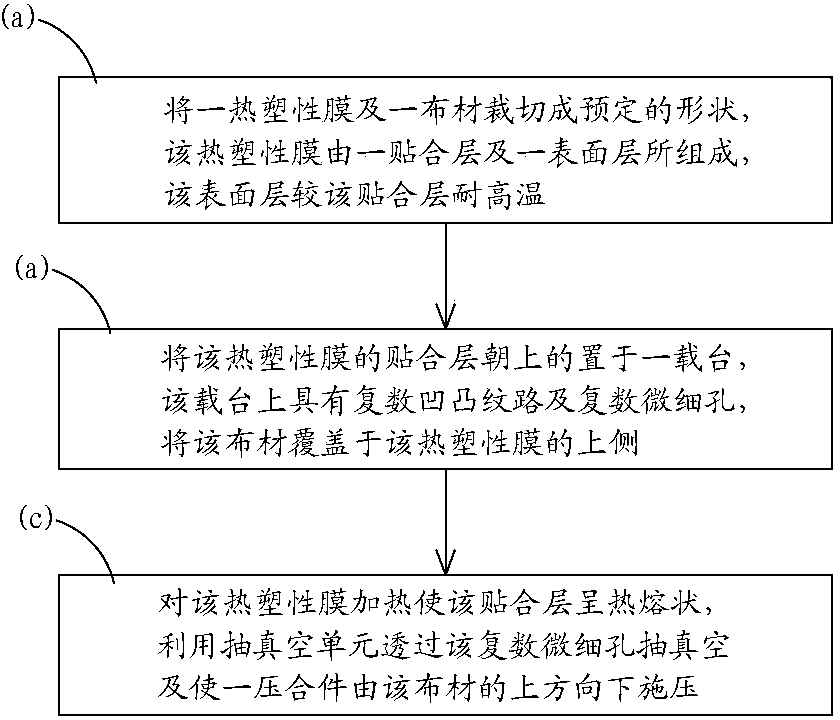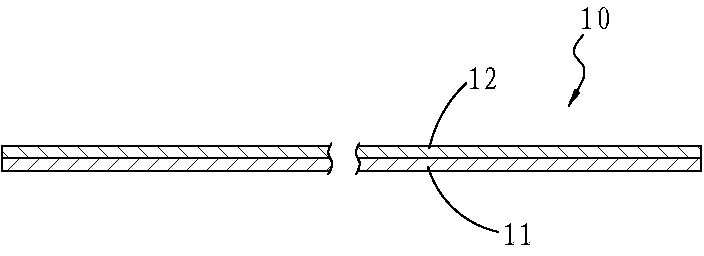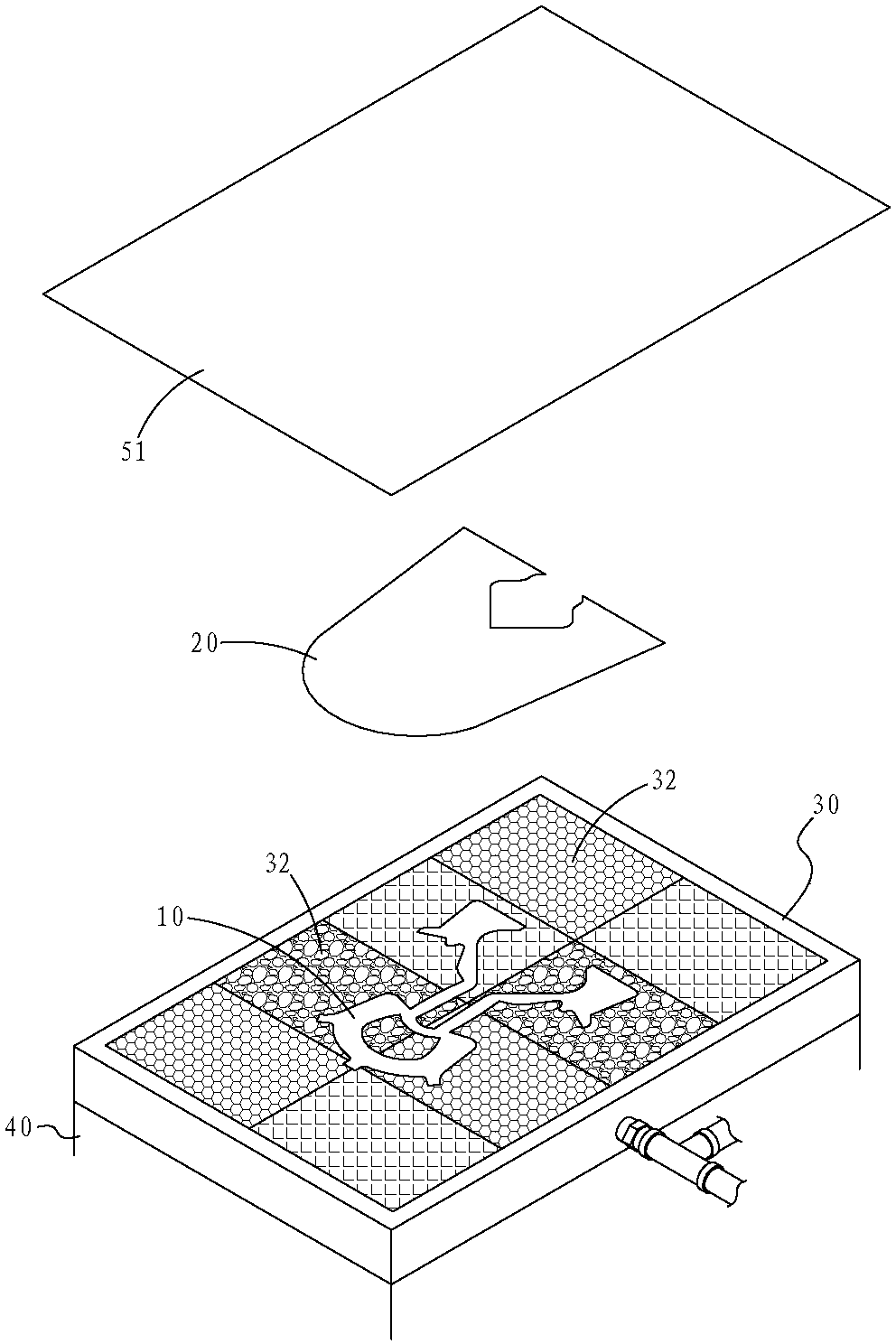Forming method for thermoplastic composite
A molding method and technology of composite materials, which are applied in the field of molding thermoplastic composite materials, can solve problems such as unclear three-dimensional lines, unclear lines, and few structural changes of thermoplastic composite materials.
- Summary
- Abstract
- Description
- Claims
- Application Information
AI Technical Summary
Problems solved by technology
Method used
Image
Examples
Embodiment Construction
[0040] In order to further explain the technical solution of the present invention, the present invention will be described in detail below through specific examples.
[0041] see Figure 1 to Figure 5 Shown is the first embodiment of the molding method of thermoplastic composite material according to the present invention, wherein it is pointed out that the molding method of thermoplastic composite material includes the following steps:
[0042] (a) Cutting a thermoplastic film 10 and a cloth material 20 into a predetermined shape, and the thermoplastic film 10 is smaller than the cloth material 20 . The thermoplastic film 10 is made of thermoplastic polymer material and colorant, which is made by extruder after mixing. It can be plastic polyurethane elastomer resin (TPU) + stilbene-butene rubber (SBR), or plastic polyurethane Elastomer resin (TPU) + styrene (SEBS), or plastic polyurethane elastomer resin (TPU) + thermoplastic rubber (TPR), or plastic polyurethane elastomer ...
PUM
| Property | Measurement | Unit |
|---|---|---|
| thickness | aaaaa | aaaaa |
Abstract
Description
Claims
Application Information
 Login to View More
Login to View More - R&D
- Intellectual Property
- Life Sciences
- Materials
- Tech Scout
- Unparalleled Data Quality
- Higher Quality Content
- 60% Fewer Hallucinations
Browse by: Latest US Patents, China's latest patents, Technical Efficacy Thesaurus, Application Domain, Technology Topic, Popular Technical Reports.
© 2025 PatSnap. All rights reserved.Legal|Privacy policy|Modern Slavery Act Transparency Statement|Sitemap|About US| Contact US: help@patsnap.com



